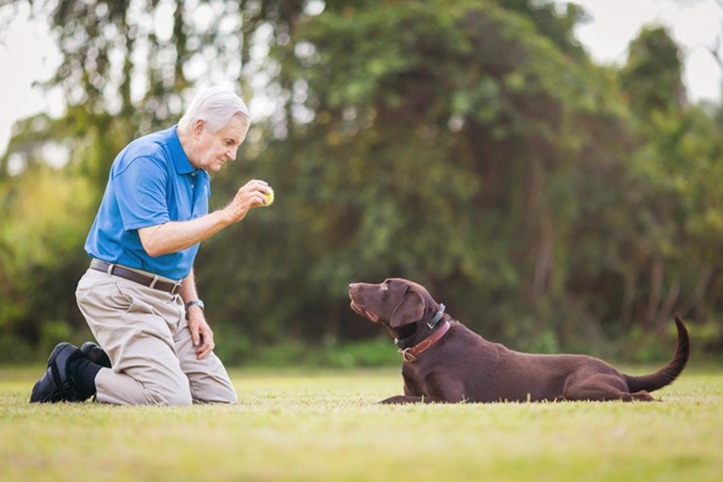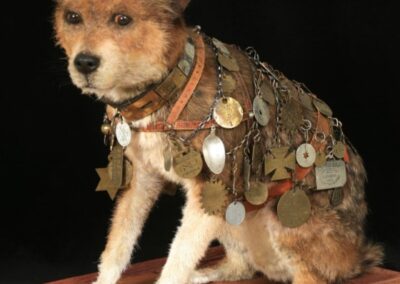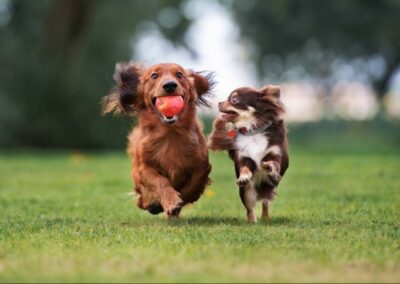
You’ve mastered “sit,” “down,” “stay,” and “come.” Your dog responds reliably, you’ve earned the praise from friends and family—and now you’ve got that itch: What’s next?
Good news: secret’s out. It’s time to turn your pup from polite to playful & impressive. Because it’s absolutely possible to teach your dog what we’ll call “advanced tricks”—the kind that stop people mid-scroll, drop jaws, and say, “Wait… your dog just did that?”
Let’s start with the mindset. Advanced tricks aren’t just cute party tricks—they build your dog’s confidence, deepen your bond, and give your dog’s brain the workout it craves.
According to experts you’ll need patience, treats (or toys), quiet space, and a clicker if you use one.
Here are some of their favorite advanced trick picks:
Catch
Picture this: you toss a treat under-hand, and your dog catches it in mid-air. That’s the simple version.
Begin with treats, once your dog gets the hang of catching, move to lightweight toys. Reward heavily when they catch. Missed? Try again.
The transition is smooth if you’re consistent.
Under the Bridge
This one looks goofy—but the effect? Magical. You sit on the floor, knees up in a triangle. You lure your dog under your legs with a toy or treat, then reward.
As they get it, add a cue like “under.” Then fade out the lure. Soon you’ll be sitting while your dog glides beneath you on cue. Slick.

Speak
Your dog already barks. Now teach him to bark on cue. Experts recommend “capturing” the behavior: mark when your dog barks naturally, then add the cue.
Once she associates the cue with the bark, she’ll bark when asked. A word of caution: once she knows the trick, only reward the cue-prompted states so you don’t end up with nonstop barking.
Leg Weaves
Here’s when you and your dog become stage partners. You stand with legs wide, lure your dog to walk between your legs, around one, then the other—forming a figure-8 pattern.
Once mastering while you’re still, you can introduce moving forward so your dog weaves while you walk. It’s elegant, fun, and a total attention-getter.
Shake Hands & “Yes/No”
Shake: Hold your hand out, wait until your dog paws at it, mark, reward. Build gradually—first paw on hand, then paw shake motion. Add cue.
Yes/No: Using distinct hand signals (closed fist for yes, pointer-finger up for no), lure your dog’s head nod or shake to match the position.
Then fade the lure and let the signal alone prompt the trick.
Bow & Circle
Bow: Lure your dog’s nose between its legs and back to its belly—make sure it doesn’t flop into a down. Verbal cue “bow” when you get the posture right.
Circle: Hold treat above nose, move hand in a big circle—dog follows. Reward. Then fade the lure and use just a verbal cue.
Both tricks help with agility, body awareness, and coordination.
It’s important to remember: these are advanced tricks. They go beyond basic obedience. For Advanced, your dog must have previously earned Novice and Intermediate, and now must perform 10 approved “Advanced” tricks—typically no lures allowed during performance.

Here’s the kicker: it’s not about perfection—it’s about progress, joy, partnership. The real wins are when…
Your dog’s tail wags before you even start the cue.
The room fills with applause from friends.
You—and your pooch—look at each other and silently say: “We did it.”
Practicing advanced tricks builds your dog’s mental muscles. And a mentally stimulated dog is less bored, less destructive, more confident.
Whether you dream of titles or just want to show off skills to friends, this path works. Expert encourages starting small, keeping sessions short, and gradually upping the challenge.
Always end on a high note—make it fun.
If you’re just starting out, pick one trick from above, set aside 5-10 minutes a day, and keep it consistent. Celebrate every step forward—no matter how tiny.
With time, patience, and treats, your dog could be weaving between your legs while you’re walking down the street or catching toys mid-air with precision.
One more reminder: big breed? Older dog? Injuries? Always consider physical limitations. Training is about fun and safety.
Modify as needed. Many giants still excel at advanced tricks when adjusted wisely.
In short: your dog is ready for more. You’re ready for more. The stage is set. The next trick? Your call.
Give your dog the chance to shine—and watch what happens when the applause isn’t just for the trick, but for the trust and connection behind it.



